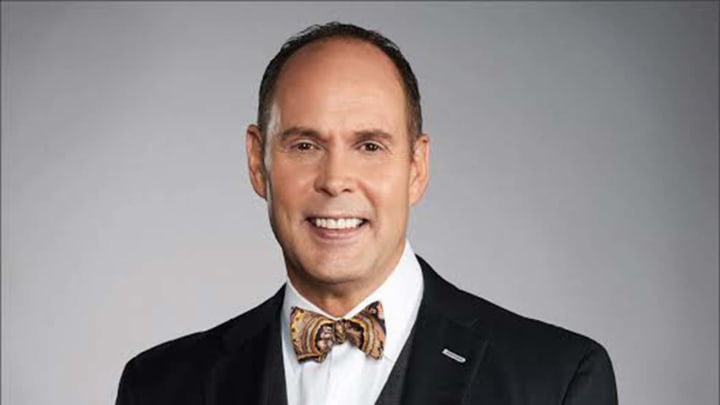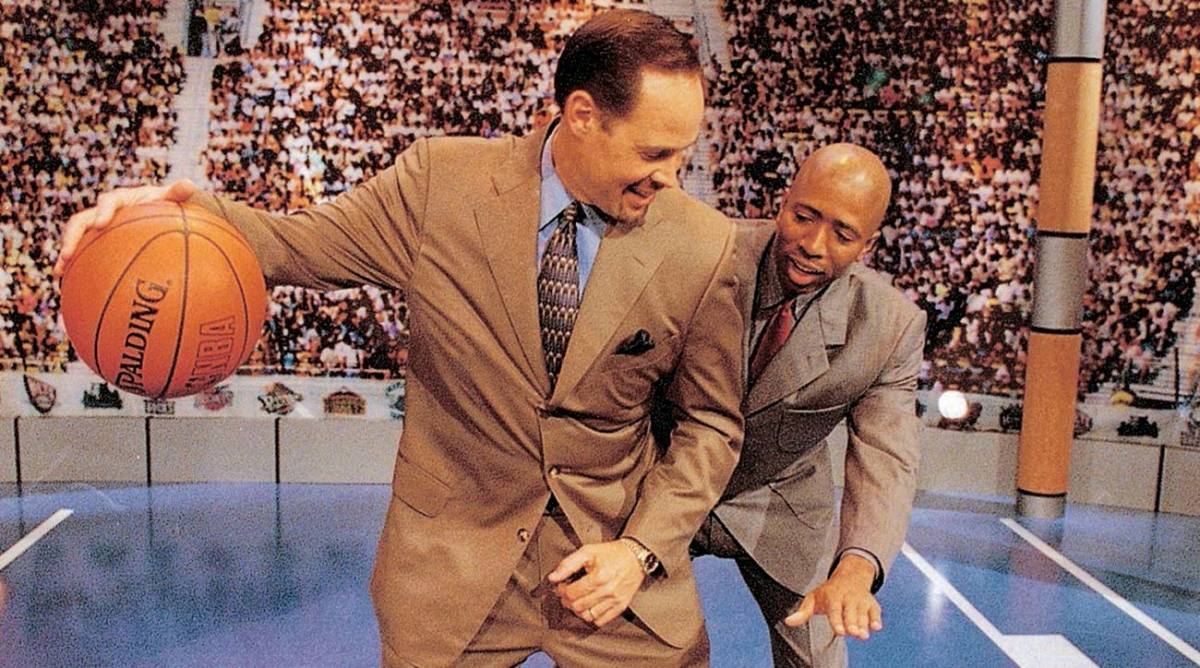Inside The NBA: The Rise Of Ernie, Chuck And Kenny

Editor's note: The following is excerpted from UNSCRIPTED: The Unpredictable Moments That Make Life Extraordinary by Ernie Johnson Jr. Baker Books, a division of Baker Publishing Group, 2017. Used by permission. BakerPublishingGroup.com.
Unscripted. It’s the one word that best describes a television show I’ve hosted for more than a quarter of a century. I can’t even begin to total the number of times I’ve used that word, sometimes adding “spontaneous” or “freewheeling” when a reporter has asked me to describe Inside the NBA. It wasn’t always that way. For many years, especially early on when I was doing the show solo, no one in the media was really asking questions about the show. It was not unlike others you’d see covering various sports. It was in large part scripted, designed to deliver the night’s highlights in a no-nonsense, straightforward way. Not that there’s anything wrong with that—I mean, that was what everybody was doing back in the late 1980s and into the 1990s. As the show evolved and TNT added in-studio analysts such as former NBA player Reggie Theus, former NBA coach Dick Versace, and women’s hoops legend Cheryl Miller, we started to stray a bit from the established formula. Still, the show didn’t look much different from what other networks were doing.

Things started truly changing in the late 1990s when Turner Sports hired Kenny Smith, a two-time NBA champion with the Houston Rockets whose three-point shooting helped propel the Rockets to their back-to-back titles in 1994 and 1995. Kenny is a New York product with a gift for talking basketball that simply resonates with NBA fans. He speaks their language. When Kenny did a few guest appearances before his retirement, the show’s producer, Tim Kiely, and I looked at each other one night and agreed that when his playing days were done, Kenny would be a natural fit for the show. He was. No matter what topic I as the host would throw his way, the Jet, as he was known, would take it and run with it.
We developed a really comfortable chemistry after a couple seasons. The show wasn’t just informative; it was downright fun, and people were beginning to take notice. One of those people was Charles Barkley, who after announcing his retirement following the 1999–2000 season, immediately became television’s most sought-after free agent.

Unscripted
by Ernie Johnson Jr.
In a heartfelt autobiography, one of the most recognized voices in sports broadcasting details the unpredictable moments that make life extraordinary.
NBC was the early front-runner for the services of Sir Charles, who had long been the league’s best sound bite. As a member of the original Olympic Dream Team in 1992, Charles Barkley had quickly become the team’s top personality on a team that had its share. Prior to the USA’s meeting with Angola in Barcelona, he was asked what he knew about the upcoming opponent. The answer was vintage Barkley. “I don’t know much about Angola,” he said, “but I know they’re in trouble.” Every NBA beat writer or sports columnist knew the following: Need a quote? Go to Charles. Need a laugh? Go to Charles. Need an athlete’s opinion on a social topic? Go to Charles. Need to know the point spread in an upcoming NFL game? Go to Charles. So in 2000, the NBA’s go-to guy had everybody wondering where he would go if indeed television was his next stop. He indicated to NBC that it looked like he would in fact sign with them, but after meeting with executives of Turner Broadcasting, he began to have a change of heart. He would say later that the show he watched on TNT simply looked like more fun than what he would be stepping into at NBC, and he wanted to be a part of it. Lucky us.
Ernie Johnson: The Steadiest Voice In Sports
Charles immediately changed the landscape of sports television, not by creating some on-air persona but just by being himself. Prior to our first halftime show of the 2000–2001 season, about forty-five seconds before he and Kenny and I were going on the air live, I mentioned the first topic we’d cover. Charles looked at the Jet and asked innocently enough, “What are you gonna say?” Kenny’s response: “You’ll find out.” And that set the tone for our show for the next fifteen seasons and counting.
If the viewers at home wondered what was going to happen next, they weren’t alone. I felt the same way. Sure, we covered the NBA, but under Tim Kiely’s leadership, we were allowed to stray wherever we wanted. For instance, regular on-air weigh-ins. Charles had put on some serious post-retirement pounds and had vowed to get under three hundred pounds. We had a scale in the studio so we could check his progress. Charles’s willingness to step on a scale on a regular basis spoke volumes about his willingness to simply be himself and to do something that would make the show better. There was never a hint of his thinking, “Hey, this might be embarrassing. I’m a future Hall of Famer. That’s off-limits!”

Never happened.
And oh, by the way, as that ongoing skit reached its conclusion, we invited a professional boxer well versed in the art of the weigh-in to take part in what we hoped would be the night Charles finally made it under three hundred. Vernon Forrest was a champion in two weight classes. He was from Augusta, Georgia, and his success in the ring brought with it a huge local following in the state. Sadly, several years later he would be murdered in a late-night Atlanta robbery. But on the night that Charles shed his shirt and stepped on the scale inside our Atlanta studio, Vernon was just one of the guys celebrating with Kenny and me as Charles weighed in at 297. He had done it, never shied away from it, and it was just a taste of what the coming years would bring.
